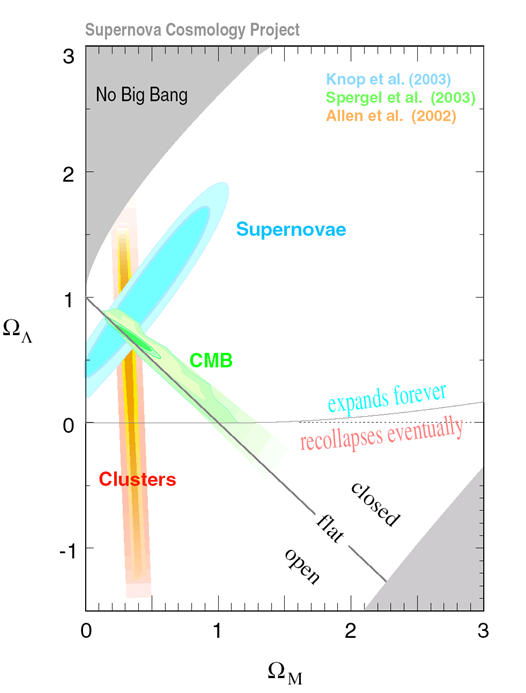
| The diagram shows recent determinations of Ωm0 and ΩΛ0. Explain how the X-ray emission from rich clusters of galaxies is used to determine Ωm0. Further explain how it can be used to determine the ratio of baryonic to non-baryonic matter in the cluster. | [5] |
|
The following is the outline answer from the exam. It represents about the most
succinct description that would contain all the necessary points for full marks.
Obviously, many variations on wording and organisation would be possible.
The X-ray emission from rich clusters of galaxies is found to come from a very hot, tenuous intracluster medium. Since the emission is optically thin, the X-ray luminosity is simply proportional to ne2 r3, where ne is the electron number density and r is the cluster radius. Assuming the gas is mostly hydrogen, the mass of the gas is proportional to ner3 (there is a proton for each electron). Therefore, measurement of the X-ray luminosity and the cluster radius determines the gas mass; this turns out to be much bigger than the total mass in the cluster galaxies. Hence, the gas mass is effectively the baryonic mass of the cluster, which (since we know the number density of clusters) gives us a measure of Ωb. |
[3] |
| The temperature profile of the gas can also be used via the equation of hydrostatic equilibrium to calculate the gravitational mass of the cluster. The ratio of the baryonic mass to the gravitational mass then directly gives the ratio of baryons to non-baryons. (Alternatively, the motions of the cluster galaxies can be used to calculate the gravitational mass via the virial theorem. In fact this was Zwicky's original evidence for dark matter, back in the 1930s.) | [2] |
(2008 Q8(b).)